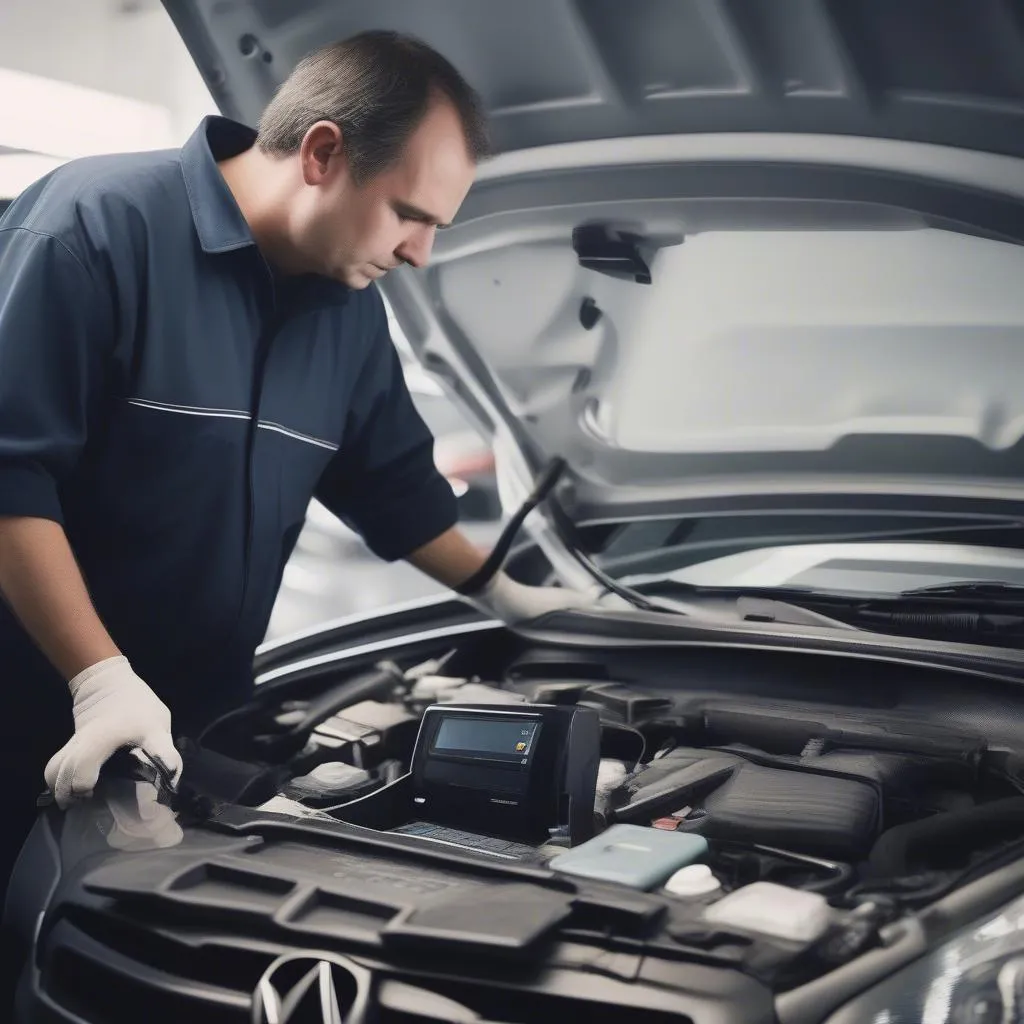Ever driven your car and noticed the “Check Engine” light come on? It’s a frustrating experience, and you might be wondering what’s wrong. Sometimes, it’s a minor issue that can be easily fixed, like a loose gas cap. In this article, we’ll delve into the world of Gas Cap Obd Ii Codes, exploring what they mean, how to diagnose them, and what you can do to get your car running smoothly again.
What is a Gas Cap Obd Ii Code?
When your car’s “Check Engine” light illuminates, it’s often due to an issue with the emissions system. The On-Board Diagnostics (OBD) system is a computer in your car that monitors various systems, including the emissions system. A gas cap OBD II code, often displayed as P0455 or P0456, indicates a problem with the fuel tank’s evaporative emissions system. This system prevents fuel vapors from escaping into the atmosphere.
Why Does a Loose Gas Cap Trigger a Code?
Imagine your car’s fuel tank as a sealed container. When you remove the gas cap, you disrupt this seal, allowing fuel vapors to escape. The OBD II system senses this change and triggers a code, indicating a potential leak in the evaporative emissions system.
Common Symptoms of a Gas Cap Obd Ii Code
Besides the “Check Engine” light, a gas cap OBD II code might be accompanied by other symptoms, such as:
- Fuel odor: You might notice a strong gasoline smell coming from your car, particularly after filling up the tank.
- Decreased fuel economy: A leaky fuel tank can cause your car to use more fuel than usual.
- Difficulty starting: In severe cases, a leaky fuel tank can make it difficult to start your car.
How to Diagnose a Gas Cap Obd Ii Code
Diagnosing a gas cap OBD II code is usually straightforward:
- Check the gas cap: Ensure the gas cap is tightly secured. If it’s loose, tighten it and drive your car for a few miles. The “Check Engine” light might turn off automatically.
- Inspect the gas cap: Examine the gas cap for damage, cracks, or wear. If the gas cap is damaged, replace it with a new one.
- Use a code reader: If the “Check Engine” light remains on, you can use an OBD II code reader to get more specific information.
- Professional diagnosis: If the code persists, or if you’re unsure about the cause, consult a qualified mechanic. They can diagnose the problem and provide the necessary repairs.
What Happens If You Ignore a Gas Cap Obd Ii Code?
Ignoring a gas cap OBD II code might seem like a minor inconvenience. However, leaving it unaddressed could lead to:
- Fuel system damage: A leak in the evaporative emissions system can allow contaminants to enter the fuel system, potentially damaging the fuel injectors, fuel pump, or other components.
- Increased emissions: Unrepaired leaks in the fuel tank can release harmful vapors into the atmosphere, contributing to air pollution.
- Costly repairs: A small issue with a loose gas cap can quickly escalate into a more significant problem, leading to costly repairs down the road.
Gas Cap Obd Ii Codes: Frequently Asked Questions
How long does it take for the “Check Engine” light to go off?
The time it takes for the “Check Engine” light to turn off after tightening the gas cap can vary depending on the car and the severity of the leak. In most cases, it will go off after a few drive cycles, which means starting and driving the car for a short distance.
How often should I check my gas cap?
It’s a good idea to check your gas cap regularly, especially if you notice any of the symptoms mentioned earlier. However, a routine check every few months should be sufficient for most drivers.
Can a bad gas cap cause other problems?
A bad gas cap can potentially trigger other OBD II codes related to the evaporative emissions system. For example, you might see codes like P0440, P0441, or P0442.
What’s the best way to prevent a Gas Cap Obd Ii Code?
The best way to prevent a gas cap OBD II code is to ensure your gas cap is always tightly sealed. Also, make sure to check the cap regularly for any signs of damage.
Get the Right Tools for the Job: Dealer Scanners for European Cars
Diagnosing and fixing gas cap OBD II codes is a crucial step in keeping your car running smoothly. When dealing with European cars, it’s essential to have the right tools. Dealer Scanners specifically designed for European vehicles can provide invaluable insights into your car’s OBD II system, helping you quickly identify and address any issues.
 Dealer Scanner for European Cars
Dealer Scanner for European Cars
Need Help? We’re Here for You!
If you’re experiencing a gas cap OBD II code or any other car troubles, don’t hesitate to reach out to us at Tech Car USA! Our team of experts is available 24/7 to assist you with diagnostics, repairs, and all your automotive needs. Contact us via Whatsapp at +84767531508 for immediate support! We’re here to help you keep your car running smoothly and safely.
Learn More About Your Car’s OBD II System
This article has only scratched the surface of the fascinating world of OBD II codes. Want to delve deeper? Check out our other articles, such as:
Conclusion
A gas cap OBD II code might seem like a minor problem, but it’s important to address it promptly. By following the steps outlined in this article, you can diagnose and fix this issue quickly and efficiently. And remember, if you have any questions or need assistance, our team at Tech Car USA is here to help!
Don’t forget to share this article with your friends and family who might be experiencing similar issues!